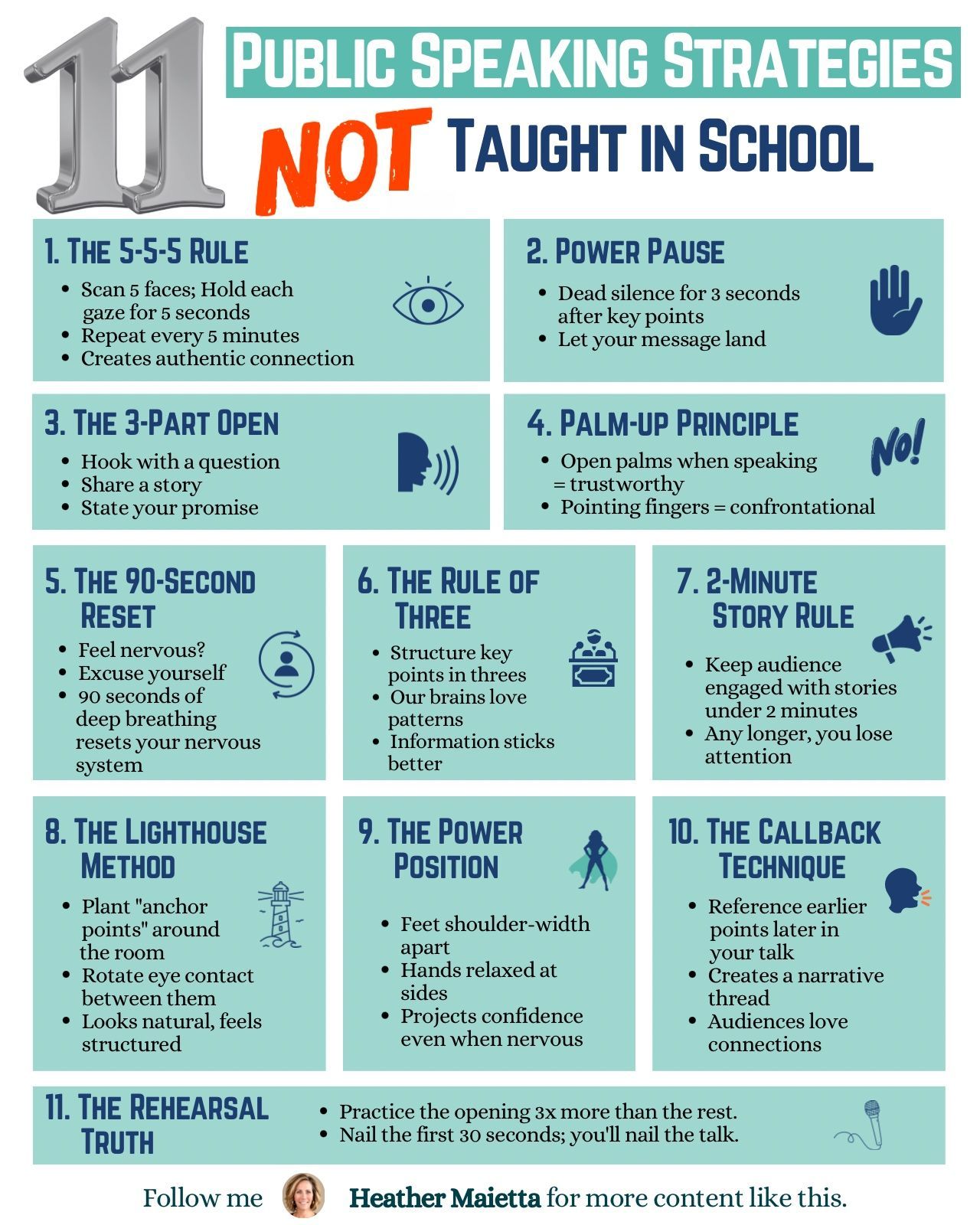5 Speaking
According to most studies, people’s number one fear is public speaking. Number two is death.
Death is number two. Does that sound right? This means to the average person,
if you go to a funeral, you’re better off in the casket than delivering the eulogy.
There are two types of speakers: Those who get nervous and those who are liars.
You are not nervous, you are excited.
5.1 Glossophobia
Glossophobia is the is the fear of public speaking. It is a form of social anxiety that goes beyond being nervous; it is an intense fear that can be paralyzing and can be associated with physical symptoms such as sweating, dry mouth, rapid heartbeat, high blood pressure, nausea, shaking, dilated pupils, a tense or shaky voice, shortness of breath, excessive vocal fillers, a lump in your throat, and going blank. In extreme cases you might throw up or pass out—that makes for a memorable speech.
Fear of public speaking is extremely common. Estimates are as high as 75% of the population being affected by glossophobia in some way. It is a social anxiety because we believe that interactions with others will result in negative evaluations, judgment, and rejection. This creates negative thoughts of failure and the belief of being incapable of speaking well in front of others.
What causes glossophobia is not well understood. Traumatic past events play a role. Being ridiculed or embarrassed in a situation of public speaking can turn a confident speaker into someone afraid of and avoiding public speaking.
Being full of dread and going through physical responses does not improve ones quality of speech. Afraid of public speaking you avoid public speaking at all cost. Glossophobia is a self-fulfilling feedback loop.
Because of the social aspect of glossophobia, the most dreaded speaking situation is in front of peers: the student presenting to the class, the brother of the bride speaking at the wedding, the researcher delivering a talk at the scientific conference, the data scientist explaining the solution to the business stakeholders. The judgment of these peer audiences are particularly important to us and potentially damaging socially or professionally. There is some truth to the Jerry Seinfeld quote.
The good news is that help is on the way. Glossophobia can be overcome. Among the remedies are cognitive behavioral therapy (CBT), mindfulness, meditation, muscle relaxation exercises, virtual reality exposure therapy (experiencing the anxiety inducing situation through virtual reality), and medication (beta-blockers and such). CBT attempts to replace negative self-talk with positive self-talk and is a popular option. You might also have heard of recommendations such as “imagine the audience members are in their underwear” or smelling lavender.
Is it easier to speak in front of a large audience or a small audience? It does not really matter. You’d think that “failing” in front of a large audience is more embarrassing and consequential, but it is the small audiences that matter socially or professionally where we feel the most judged and where a lot is at stake.
Advice such as “imagine the audience in their underwear” is meant to de-escalate the perceived threat from the audience. Presenting to larger audiences in a production setting—such as a stage—the de-escalation occurs because you often cannot see (or identify) the audience members. The bright lights that illuminate the stage make the speaker visible to the audience and at the same time make the audience nearly invisible to the speaker.
I recall speaking from a stage in front of thousands at a user conference and was not able to identify anyone in the audience past the first few rows. If you are worried about large audiences, this is a great way to tune them out.
I am not going to comment on these treatment approaches and advice such as smelling herbs or imaginary audiences. The best approach to deal with fear of public speaking—in my opinion—is to practice public speaking and to get better at it. It is a skill that can be learned and practiced.
Pitter patter, let’s get at ’er.
